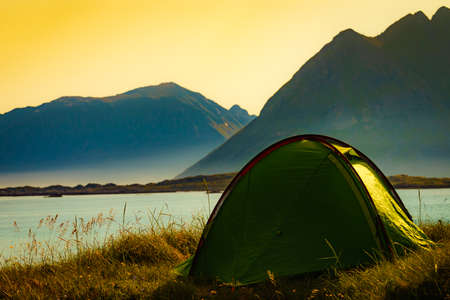1. Understanding the Pack It In, Pack It Out Ethos
The phrase “Pack It In, Pack It Out” is more than just a catchy slogan—its a core value in outdoor ethics across the United States. Rooted in the Leave No Trace (LNT) principles, this idea encourages anyone enjoying the outdoors to take full responsibility for their trash and waste. If you bring it with you into nature, you should bring it back out. Simple as that.
So where did this come from? The Leave No Trace movement began gaining momentum in the 1980s as more people started venturing into America’s wilderness areas. With increased foot traffic came more litter, damaged ecosystems, and overwhelmed park staff. Organizations like the U.S. Forest Service and nonprofits such as the Leave No Trace Center for Outdoor Ethics recognized a need to educate the public on minimizing their environmental impact.
This led to the creation of seven Leave No Trace principles, which now serve as a guide for responsible outdoor recreation across all 50 states. Heres a quick look at those principles:
| Leave No Trace Principle | Description |
|---|---|
| Plan Ahead and Prepare | Know the regulations and prepare for extreme weather or emergencies. |
| Travel and Camp on Durable Surfaces | Stick to trails and established campsites to avoid damaging vegetation. |
| Dispose of Waste Properly | Pack out all trash, leftover food, and litter—including biodegradable items. |
| Leave What You Find | Dont take rocks, plants, or historical artifacts. |
| Minimize Campfire Impact | Use a camp stove or follow fire regulations when building fires. |
| Respect Wildlife | Observe animals from a distance; don’t feed them or disturb their habitats. |
| Be Considerate of Other Visitors | Keep noise down and yield to others on trails. |
“Pack It In, Pack It Out” ties directly into the third principle: Dispose of Waste Properly. This means all your garbage—from snack wrappers to used paper towels—should leave with you. Even things that seem harmless like orange peels or sunflower seed shells can harm wildlife and take years to decompose in high-altitude environments.
The significance of this practice is huge. Not only does it keep natural spaces clean and beautiful for everyone, but it also protects wildlife from harmful materials and helps preserve fragile ecosystems. In many U.S. national parks and forests today, youll find signage reminding visitors of this ethic—and even some areas where you’re required to pack out human waste using wag bags or portable toilets.
By following “Pack It In, Pack It Out,” campers, hikers, and backpackers help ensure that Americas wild places stay just that—wild—for generations to come.
2. Types of Waste You’ll Encounter While Camping
When youre out in the wild, managing waste properly is a big part of following Leave No Trace principles. Not all trash is created equal—different kinds of waste need different strategies. Here’s a breakdown of the most common types you’ll deal with while camping and how to handle each responsibly.
Food Scraps
It might seem harmless to toss an apple core into the woods, but food scraps can attract wildlife, disrupt natural diets, and take longer than youd expect to decompose. Whether it’s leftover pasta or fruit peels, all food waste should be packed out.
Tips for Managing Food Scraps:
- Plan meals carefully to reduce leftovers.
- Bring reusable containers to store uneaten food.
- Use a sealable bag or container to pack out scraps.
Packaging
From granola bar wrappers to freeze-dried meal pouches, packaging adds up quickly. Since many campsites dont have trash bins, its up to you to take everything back out with you.
Tips for Managing Packaging Waste:
- Remove excess packaging before your trip (repackage items at home).
- Use reusable containers instead of single-use plastics.
- Pack a separate bag just for recyclables and sort them when you get home.
Human Waste
This is probably the least fun topic, but it’s one of the most important. Human waste can contaminate water sources and spread disease if not handled correctly. The right method depends on where youre camping.
| Camping Area Type | Waste Disposal Method |
|---|---|
| Backcountry / Wilderness | Bury in a cathole 6-8 inches deep and at least 200 feet from water sources |
| No-dig Zones (desert, alpine, frozen ground) | Use a portable toilet or carry-out system like a wag bag |
| Campsites with Facilities | Use provided toilets or vault toilets |
Extra Tips:
- Always carry a trowel if burying waste is allowed.
- Pack out used toilet paper in a sealed plastic bag unless otherwise permitted.
Greywater (Dishwater or Bathwater)
Leftover water from washing dishes or yourself may contain food particles and soap that can harm ecosystems if dumped improperly. Even biodegradable soap can disrupt aquatic life.
How to Manage Greywater:
- Strain dishwater to remove food bits (pack those out with your trash).
- Dispose of strained greywater at least 200 feet from lakes, rivers, or streams by scattering it widely (“broadcasting”).
- If youre at a developed campsite, use designated greywater disposal areas if available.
Quick Waste Management Summary:
| Type of Waste | Main Concern | Best Practice |
|---|---|---|
| Food Scraps | Attracts wildlife & doesnt decompose quickly | Pack it out in sealed containers |
| Packaging | Litter & non-biodegradable materials | Avoid single-use items; pack out all trash |
| Human Waste | Disease & water contamination risk | Bury or pack out depending on location rules |
| Greywater | Affects soil & aquatic ecosystems | Bury or scatter away from water sources after straining solids |
Treating every piece of waste as your responsibility helps keep nature wild and enjoyable for everyone. By knowing what types of waste youll face and how to handle them properly, youre already on your way to being a Leave No Trace pro.
![]()
3. Best Practices for Waste Storage and Transport
When youre out camping, especially in backcountry or remote areas, managing your trash is more than just tossing it in a bag. Its about respecting the environment and following Leave No Trace principles to keep nature wild and beautiful for everyone. Here are some simple yet effective ways to store and transport your waste without leaving a mess—or attracting wildlife.
Smart Storage Tips at Camp
Keeping your campsite clean starts with storing your trash and recyclables the right way. Use containers that seal tightly to block odors and prevent animals from getting into them. Heres a quick look at common storage options:
| Storage Method | Pros | Cons |
|---|---|---|
| Bear-Resistant Canisters | Keeps wildlife out; durable; approved in many parks | Bulky; heavier to carry |
| Ziploc or Resealable Bags | Lightweight; easy to pack out; good for small waste | Tear easily; not great for large amounts of trash |
| Dry Bags | Waterproof; reusable; seals tight against odor | Can get smelly over time if not cleaned |
| DIY Trash Tube (PVC Pipe) | Scent-proof; animal-resistant; reusable | Takes effort to make; rigid shape can be awkward to pack |
Minimizing Smell and Mess
No one likes a stinky camp. To keep odors down, double-bag your trash using heavy-duty garbage bags or odor-blocking liners. Make sure you don’t leave food scraps lying around—scrape all food waste into your sealed container as soon as you’re done eating.
Helpful Tools to Bring Along:
- Bungee cords: Secure bags or containers so they dont tip over.
- Duct tape: Great for sealing holes or reinforcing bags on the go.
- Scent-proof bags: Designed for backcountry use, these help mask food smells.
Avoiding Wildlife Interactions
The last thing you want is a bear, raccoon, or squirrel rummaging through your trash at night. Always store waste at least 200 feet from your tent and cooking area. In bear country, use a bear hang or bear locker when required by park regulations.
Bears Aren’t the Only Problem!
Squirrels, mice, and raccoons can do serious damage too—especially if they associate people with easy snacks. That’s why scent control matters even with smaller critters around.
Packing It Out Like a Pro
If youre heading home after your trip, make sure all trash and recyclables are securely packed out with you. Don’t rely on campground bins unless they’re designated for public use and clearly labeled. Many remote sites require that you take everything with you—including used hygiene products and food scraps.
4. Dealing with Human Waste in the Backcountry
When heading into the backcountry, managing human waste properly is not just about keeping trails clean—its about protecting water sources, wildlife, and the experience for everyone. The Leave No Trace (LNT) principles provide several approved methods to handle human waste responsibly. Depending on where youre going and local regulations, you’ll want to choose the right approach.
Catholes: A Simple and Natural Solution
If you’re camping in a remote area without restrooms and local rules allow it, digging a cathole is an effective method. Here’s how to do it right:
How to Dig a Proper Cathole
| Step | Description |
|---|---|
| Location | At least 200 feet from water sources, trails, and campsites. |
| Depth | 6–8 inches deep (about the length of a trowel). |
| Diameter | 4–6 inches wide. |
| After Use | Cover with original soil and disguise with natural materials like leaves or rocks. |
Wag Bags: Pack It Out Made Easy
Some areas require all human waste to be packed out—especially fragile alpine zones or desert landscapes. Wag bags are a practical solution. They are specially designed kits that include everything you need to go, seal, and carry out your waste safely and odor-free.
What’s in a Typical Wag Bag?
- A disposable bag with gelling agents to solidify waste
- A zip-seal outer bag for safe transport
- Toilet paper and hand sanitizer
Portable Toilets: Best for Base Camps and Group Sites
If youre camping with a group or staying at a base camp for multiple days, portable toilets can be a great option. They’re more comfortable than catholes and reduce environmental impact when used correctly.
Tips for Using Portable Toilets Responsibly
- Set up at least 200 feet away from water sources and camp kitchens.
- Empty waste at designated dump stations only—never in nature.
- Clean and sanitize regularly if reused over multiple days.
Know Before You Go
Laws and best practices vary by location. Some national parks mandate wag bags; others permit catholes under certain conditions. Always check with local land management agencies before your trip so you can plan accordingly and follow the rules.
Quick Comparison of LNT-Approved Methods
| Method | Best For | LNT Compliance |
|---|---|---|
| Cathole | Solo backpacking trips in approved areas | Yes (if dug properly) |
| Wag Bag | High-use or sensitive environments; required in some parks | Yes (pack out all waste) |
| Portable Toilet | Group camping or base camps with longer stays | Yes (if disposed of properly) |
No matter which method you use, the goal remains the same: leave no trace behind. Managing human waste responsibly ensures our wild places stay wild—for us and future generations.
5. Building a Leave No Trace Habit for Your Group
Creating lasting Leave No Trace (LNT) habits starts with consistency, awareness, and making it fun for everyone in your camping group—especially kids. Teaching the “Pack It In, Pack It Out” principle doesn’t have to feel like a chore. With a few easy strategies, your crew can become a well-oiled, waste-free machine that leaves campsites cleaner than you found them.
Start With a Pre-Trip Plan
Before you even hit the trail or pull up to the campsite, talk about what “Leave No Trace” means. Make sure everyone understands why it matters—not just for nature but for future campers too. Assign roles based on age and ability so everyone has ownership in keeping the site clean.
Sample Roles by Age Group
| Age Group | Role Suggestion |
|---|---|
| Younger Kids (5–10) | Trash Scouts – Help find and collect small litter around camp |
| Tweens (11–13) | Recycling Monitors – Separate recyclables from trash when possible |
| Teens (14–17) | Gear Checkers – Make sure all gear is packed out properly |
| Adults | LNT Leaders – Set the example and oversee final clean-up |
Create Daily Clean-Up Routines
A great way to build the habit is through daily rituals. Consider setting aside 10 minutes after meals or before sunset as “camp sweep time.” Everyone walks around looking for micro-trash like food wrappers, bottle caps, or twist ties. Make it a game—whoever finds the most gets to pick the next hike or s’mores flavor!
Use Visual Cues and Reminders
If you’re car camping or base camping, hang a small sign near your gear station that says: “Did You Pack It In? Then Pack It Out!” This gentle reminder keeps everyone focused. Use color-coded bags or bins so people can easily separate trash, recycling, and compost if available.
Praise Progress, Not Perfection
No one gets it right every time—and that’s okay! Celebrate small wins like spotting trash before it blows away or remembering reusable containers instead of zip-top bags. Positive reinforcement builds long-term habits faster than scolding.
LNT Habit-Building Quick Tips
- Keep it simple: One bag for all trash per person helps track waste.
- Create a checklist: Use it before leaving camp to make sure nothing’s left behind.
- Tie lessons to nature: Show how trash affects animals and plants nearby.
- Lead by example: Kids especially learn by watching adults take responsibility.
The more your group practices these routines, the more natural they’ll become. Before long, packing out everything you pack in won’t just be something you do—it’ll be part of who you are as responsible outdoor stewards.


